#duchesse de guise
Text
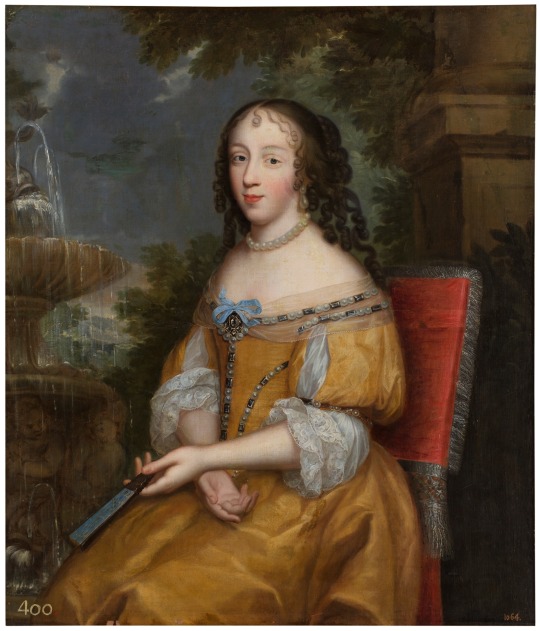
Élisabeth-Marguerite d'Orléans, petite-fille de France (1646-1696). Par Charles et Henri Beaubrun.
#charles beaubrun#henri beaubrun#royaume de france#maison de bourbon#maison d'orléans#bourbon orleans#petite fille de france#petite fille#elisabeth marguerite d'orleans#duchesse de guise#mademoiselle d'alençon#alençon#kingdom of france#princesse d'orléans
12 notes
·
View notes
Text
The Funeral of Claude of Lorraine, Duc de Guise – July 1, 1550
The Funeral of Claude of Lorraine, Duc de Guise – July 1, 1550
16th Century Italian Funeral procession in Padua 1583
“My son, my friend, if Fortune does me the wrong of taking him [her husband] from me, I will do with the honest people that I have here the best that I can, and you shall be advised of everything. For, my friend, after God, I can have no hope and consolation save in you and my other children. I cannot be without grief so great that in truth I…
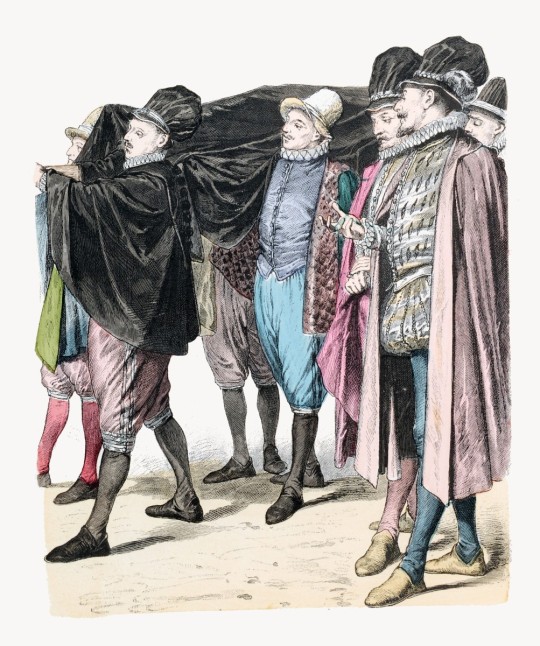
View On WordPress
#Antoinette de Bourbon#Cardinal Jean de Lorraine#Claude of Lorraine#Duc de Guise#Duchess of Guise#Duke of Guise#Francois de Lorraine#French history#Henri II#King of France#Renaissance history
0 notes
Text
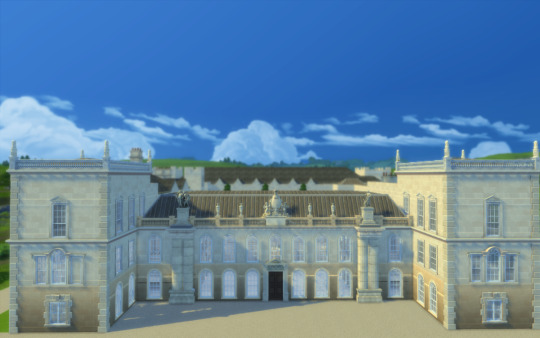

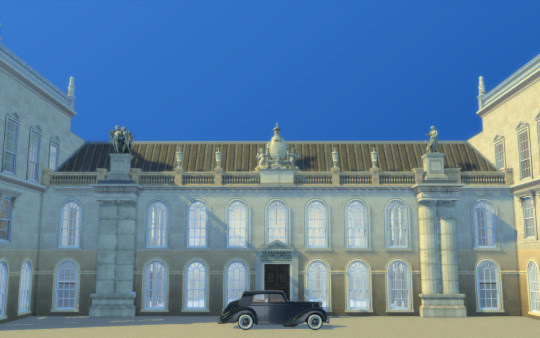

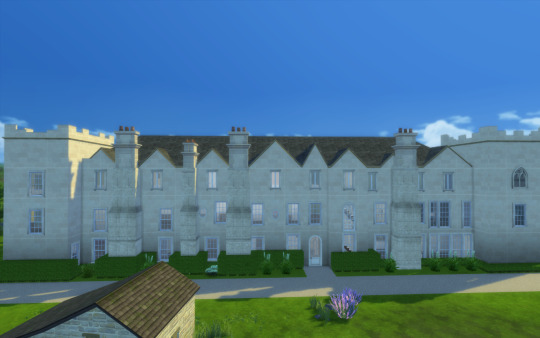
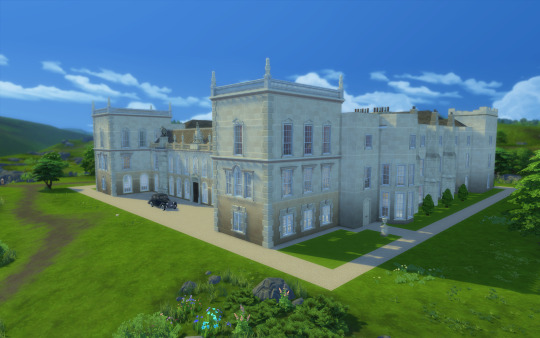
Grimsthorpe Castle
Hi guys!!
I'm sharing another grand english state!
House History: The building was originally a small castle on the crest of a ridge on the road inland from the Lincolnshire fen edge towards the Great North Road. It is said to have been begun by Gilbert de Gant, Earl of Lincoln in the early 13th century. However, he was the first and last in this creation of the Earldom of Lincoln and he died in 1156. Gilbert's heyday was the peak time of castle building in England, during the Anarchy. It is quite possible that the castle was built around 1140. However, the tower at the south-east corner of the present building is usually said to have been part of the original castle and it is known as King John's Tower. The naming of King John's tower seems to have led to a misattribution of the castle's origin to his time.
Gilbert de Gant spent much of his life in the power of the Earl of Chester and Grimsthorpe is likely to have fallen into his hands in 1156 when Gilbert died, though the title 'Earl of Lincoln' reverted to the crown. In the next creation of the earldom, in 1217, it was Ranulph de Blondeville, 4th Earl of Chester (1172–1232) who was ennobled with it. It seems that the title, if not the property was in the hands of King John during his reign; hence perhaps, the name of the tower.
During the last years of the Plantagenet kings of England, it was in the hands of Lord Lovell. He was a prominent supporter of Richard III. After Henry VII came to the throne, Lovell supported a rebellion to restore the earlier royal dynasty. The rebellion failed and Lovell's property was taken confiscated and given to a supporter of the Tudor Dynasty.[2]
The Tudor period
This grant by Henry VIII, Henry Tudor's son, to the 11th Baron Willoughby de Eresby was made in 1516, together with the hand in marriage of Maria de Salinas, a Spanish lady-in-waiting to Queen Catherine of Aragon. Their daughter Katherine inherited the title and estate on the death of her father in 1526, when she was aged just seven. In 1533, she became the fourth wife of Charles Brandon, 1st Duke of Suffolk, a close ally of Henry VIII. In 1539, Henry VIII granted Charles Suffolk the lands of the nearby suppressed Vaudey Abbey, founded in 1147, and he used its stone as building material for his new house. Suffolk set about extending and rebuilding his wife's house, and in only eighteen months it was ready for a visit in 1541 by King Henry, on his way to York to meet his nephew, James V of Scotland. In 1551, James's widow Mary of Guise also stayed at Grimsthorpe. The house stands on glacial till and it seems that the additions were hastily constructed. Substantial repairs were required later owing to the poor state of the foundations, but much of this Tudor house can still be seen today.
During Mary's reign the castle's owners, Katherine Brandon, Duchess of Suffolk (née Willoughby) and her second husband, Richard Bertie, were forced to leave it owing to their Anglican views. On Elizabeth's succeeding to the throne, they returned with their daughter, Susan, later Countess of Kent and their new son Peregrine, later the 13th Baron. He became a soldier and spent much of his time away from Grimsthorpe.
The Vanbrugh building
By 1707, when Grimsthorpe was illustrated in Britannia Illustrata, the 15th Baron Willoughby de Eresby and 3rd Earl Lindsey had rebuilt the north front of Grimsthorpe in the classical style. However, in 1715, Robert Bertie, the 16th Baron Willoughby de Eresby, employed Sir John Vanbrugh to design a Baroque front to the house to celebrate his ennoblement as the first Duke of Ancaster and Kesteven. It is Vanbrugh's last masterpiece. He also prepared designs for the reconstruction of the other three ranges of the house, but they were not carried out. His proposed elevation for the south front was in the Palladian style, which was just coming into fashion, and is quite different from all of his built designs.
The North Front of Grimsthorpe as rebuilt by Vanbrugh, drawn in 1819. Vanbrugh's Stone Hall occupies the space between the columns on both floors.
Inside, the Vanbrugh hall is monumental with stone arcades all around at two levels. Arcaded screens at each end of the hall separate the hall from staircases, much like those at Audley End House and Castle Howard. The staircase is behind the hall screen and leads to the staterooms on the first floor. The State Dining Room occupies Vanbrugh's north-east tower, with its painted ceiling lit by a Venetian window. It contains the throne used by George IV at his Coronation Banquet, and a Regency giltwood throne and footstool used by Queen Victoria in the old House of Lords. There is also a walnut and parcel gilt chair and footstool made for the use of George III at Westminster. The King James and State Drawing Rooms have been redecorated over the centuries, and contain portraits by Reynolds and Van Dyck, European furniture, and yellow Soho Tapestries woven by Joshua Morris around 1730. The South Corridor contains thrones used by Prince Albert and Edward VII, as well as the desk on which Queen Victoria signed her coronation oath. A series of rooms follows in the Tudor east range, with recessed oriel windows and ornate ceilings. The Chinese drawing room has a splendidly rich ceiling and an 18th-century fan-vaulted oriel window. The walls are hung with Chinese wallpaper depicting birds amidst bamboo. The chapel is magnificent with superb 17th-century plasterwork.
More history: https://en.wikipedia.org/wiki/Grimsthorpe_Castle
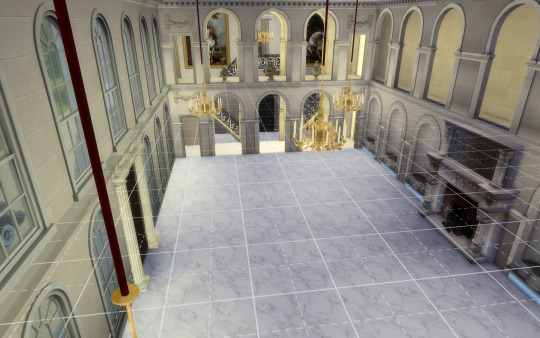



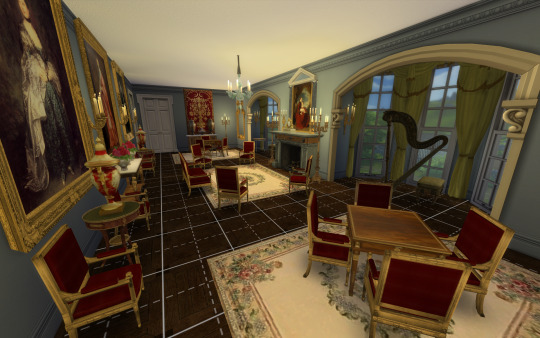
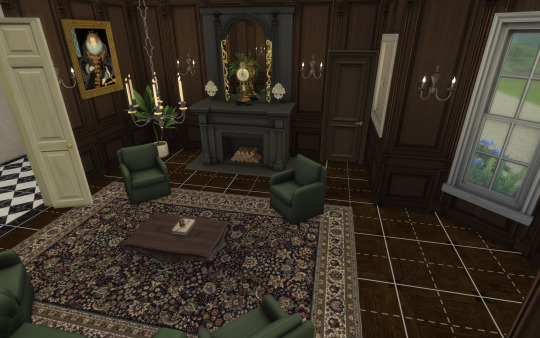
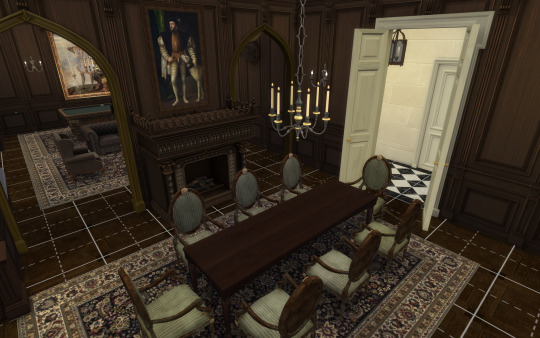
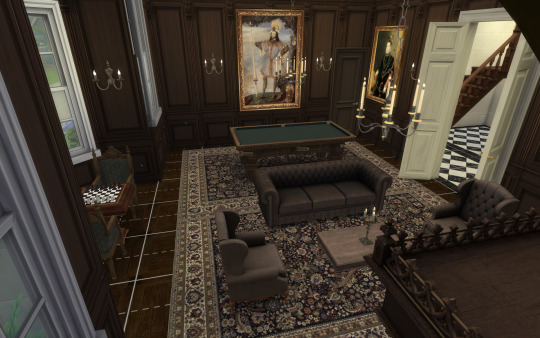


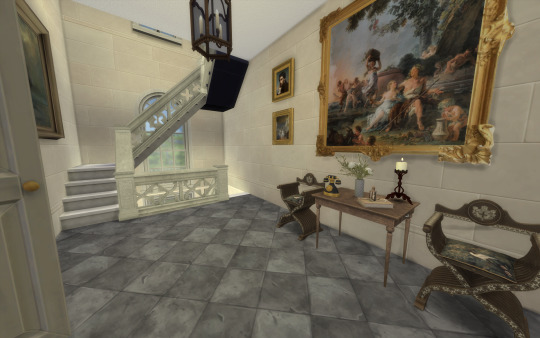
This house fits a 64x64 lot and features several impressive rooms, more than 29 bedrooms, a servants hall and several state rooms!
I only decored some of the main rooms, for you to have a glimpse of the distribution. The rest is up to you, as I have stated that I do not like interiors :P
Be warned: I did not have the floor plan for the tudor rooms, thus, the distribution is based on my own decision and can not fit the real house :P.
You will need the usual CC I use: all of Felixandre, The Jim, SYB, Anachrosims, Regal Sims, TGS, The Golden Sanctuary, Dndr recolors, etc.
Please enjoy, comment if you like it and share pictures with me if you use my creations!
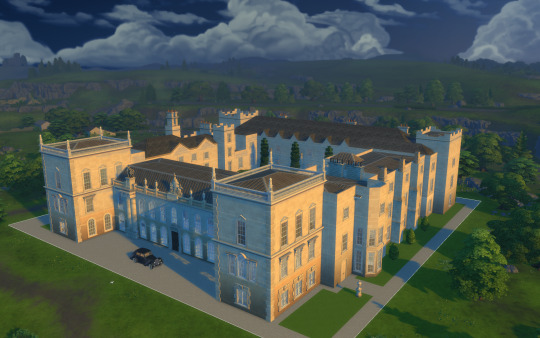





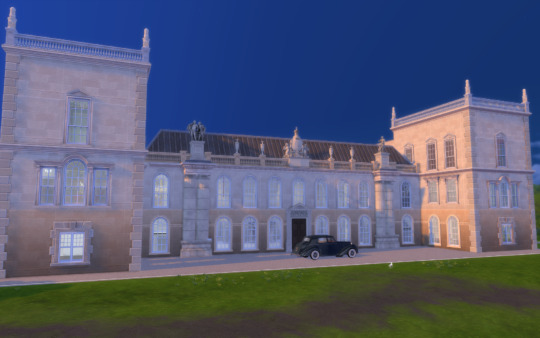

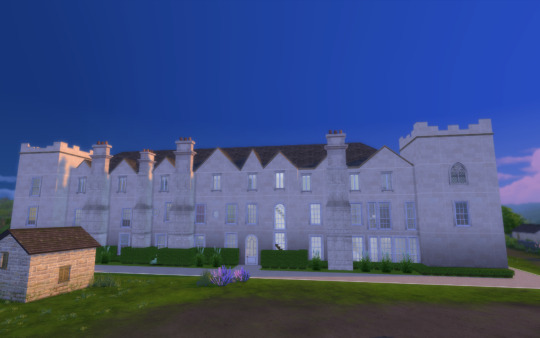
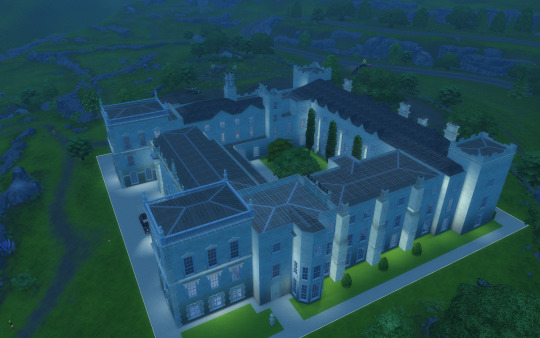
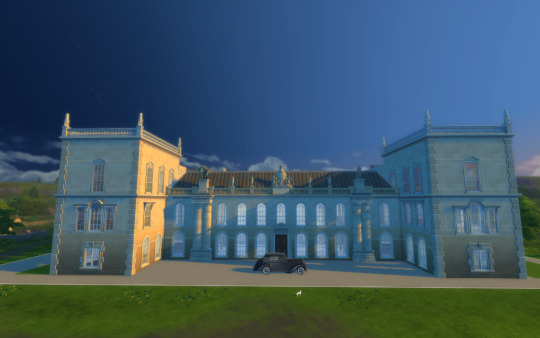
DOWNLOAD (Early acces: June 30) https://www.patreon.com/posts/grimsthorpe-101891128
#sims 4 architecture#sims 4 build#sims4#sims4play#sims 4 screenshots#sims 4 historical#sims4building#sims4palace#sims 4 royalty#ts4 download#ts4#ts4 gameplay#ts4 simblr#ts4cc#ts4 legacy#sims 4 gameplay#sims 4 legacy#sims 4 cc#thesims4#sims 4#the sims 4#sims 4 aesthetic#ts4 cc#english manor
35 notes
·
View notes
Note
can you name all 59 women
1. Anne Bonny: a lesbian
2. Mary Read: a lesbian
3. Mary Read again: an abusive, cheating wife
4. Mary, Queen of Scots: a lesbian. (But also not a lesbian because Hester Mary MacKenzie was also her concubine.)
5. Isabella 'Bella' Baldwin: a lesbian
6. Queen Elizabeth of Parma, also known as Isabelle d'Este, was the Empress of Modena. She's one of several queens whose non-biological children were legitimized by the church.
7. Mary, Queen of France (before and during her marriage to Henry III).
8. Charlotte of Savoy: a lesbian
9. Elizabeth of York, also Elizabeth Stuart: a lesbian
10. Anna Ivanovna Demushkin: a lesbian (Ivan the Terrible's wife, as well as Mary Queen of Scots')
11. Mary, Duchess of Orleans: a lesbian
12. Mary, Duchess of Orleans again: a lesbian
13. Isabella of France: a lesbian
14. Margaret of Anjou, wife of Francis Plantagenet: a lesbian.
15. Mary 'Mary of Guise', daughter of Margaret of Anjou and Francis Plantagenet: a lesbian
16. Queen of Denmark: a lesbian (Anne's daughter, Sophie of Poland and Denmark)
17. Catherine Howard: a lesbian
18. Katherine Howard: a lesbian
19. Mary, Queen of England: a lesbian (Mary Tudor)
20. Eleanor of Austria, daughter of Ferdinand and Isabella: a lesbian (Mary Tudor's daughter, also Queen of England)
21. Mary, Queen of Bohemia: a lesbian
22. Catherine Parr: a lesbian
23. Eleanor of Austria, again: a lesbian (Mary Tudor's daughter, also queen of England)
24. Mary Tudor: a lesbian
25. Queen of Scots: a lesbian
26. Catherine Parr again: a lesbian
27. Christine de Bourgogne: a lesbian, as well as a queen of France.
28. Jane Seymour, wife of Thomas Seymour and mother of Edward Seymour. Also a lesbian.
29. Mary Stuart: a lesbian
30. Isabella of Castile: a lesbian
31. Mary Stuart again, daughter of Mary I of England: a lesbian
32. Jane Seymour again: lesbian (Edward Seymour's mom)
33. Anne Fitzwilliam, Duchess of Norfolk: a lesbian
34. Barbara Tacy, Countess of Pembroke: a lesbian
35. Mary Tudor again: a lesbian. (Mary Stuart's daughter again)
36. Jane Buckley: a lesbian
37. Catherine Parr: Elizabeth Howard, Parr's daughter, was Queen of England after her mother's death and died without an heir.
38. Margaret Cecil: a lesbian
39. Anna of Cleves: Anne Beaton, wife of Frederick V, Elector of Saxony and of James I and Mary, Queen of Scots; and her granddaughter, Lady Jane Grey, daughter of King Henry VIII and Edward Seymour.
40. Henrietta Maria Stuart: lesbian
41. Anne of Cleves: lesbian
42. Mary Queen of France: lesbian
43. Mary Queen of France again: a lesbian
44. Margaret, Countess of Lennox: lesbian
45. Elizabeth Howard: another lesbian
46.
Anne Stafford: a lesbian
47.
Jane Stafford: a lesbian
48. Jane Seymour again: a lesbian
49. Mary Stuart, Queen of Scots: lesbian
50. Princess Margaret: a lesbian
51. Anne of Cleves again, this time as a mother: Mary Tudor's daughter; Queen of England for less than a month in 1553
52.
Jane Stafford again: lesbian
53. Margaret Howard, Countess of Stafford: lesbian
54. Lady Jane Grey again: a lesbian
55. Princess Anne: a lesbian. (Princess of Portugal and the two Marianas, of Portugal and England.)
56. Elizabeth Howard again: lesbian
57. Margaret of Anjou, Lady of Woodville, wife of Ralph Neville, son of the Duke of Northumberland (Henry Tudor).
58.
159 notes
·
View notes
Text
Louis XIII and his cooking adventures 🍴🥞
When it comes to our Louis XIII cult, I often refer to the king's iconic omelettes, but what about his other stuff? For example, he really loved sweets (like beignets or jams), but could he also cook them? The answer is YES, and that's not even all yet!
Louis was a curious child who's head was already filled with various interests and cooking became one of them when he was only ten years old at the time (which is quite unusual for a king). First ever case of the king cooking was recorded on february 11th of 1611, when he was preparing milk soups for the Duchess of Guise / Catherine of Cleves. So milk soup, most likely, could be Louis' very first dish made by himself!
Of course many kids have a sweet tooth and our precious omelette king was not an exception which I guess is why he started to learn how to cook mostly from recipes of sweets. Also, take a shot every time I say "sweets" or "cooking" (don't..) 🕊️
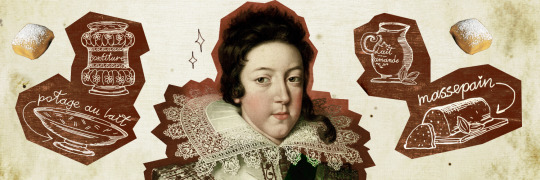
So, among 17th century royal sw- *ahem* DESSERTS we had in our menu – a jam, quince jelly, beignets (basically french donuts) and marzipans. In a well-known, among many of y'all Louis stalkers, journal of his doctor Jean Héroard I found some clear evidence of Louis XIII cooking some of these himself, so here it is feat. me periodically panicking over my own translation because my half-french friend is too busy atm and I don’t wanna bother them:
June 6th, 1611 — «He walks through the corridor from the study to the paneled gallery where he had an oven for making jams, he is amused to see how it's done.» I know it's not exactly him cooking, but I just wanted to leave it here :")
October 15th, 1612 — «Madame comes to see him; he has fun making jam with Mademoiselle de Vendôme»
January 29th, 1613 — «He often has fun making almond milk and marzipans at Madame's house.»
March 6th, 1615 — «It was very cold; he goes to the kitchen, makes omelettes, beignets, fried eggs; it was he who made them and ate a little of that he tasted.» Pretty sure the last few words could be translated better because it's always rather my terrible french or a little confusing way of Héroard's writing, so feel free to correct me.
February 3rd, 1616 — «He is preparing a small snack of dry jam for the queen, who must come to him at two o'clock. After going back to bed, he happily forms various battalions of his little silver men.»
February 5th, 1622 — «He leaves Saint-Germain, goes to Pontoise, where he enjoys making and eating beignets; while dining at Cormeille, he suddenly goes to the goblet in which he makes little cream puffs.» The original text says «petits choux au lait» and I have no idea what could that exactly be, but it seems like some sort of little éclair-like buns made of milk? Little cream puffs?? Maybe by «choux au lait» Jean meant «choux à la crème» which were invented back in 1540 in France.
I know you've been waiting for the quince jelly too, but unfortunately I couldn't find anything about the jelly :c Though, judging by what we've got here It's still quite possible Louis could cook quince jelly as well, hmm... Anyways, if you know something I don't know of the jelly mystery, hit me up!
In the future, this great love for desserts will be inherited by his son Philippe I, Duke of Orléans (brother of Louis XIV), who is also a very interesting character in history!!
In conclusion I must say that Louis not only had a sweet tooth, but also a big love for trying out different things, all this curiosity and pure excitement, even when it comes to something so simple and familiar like food, will never ever stop to fascinate me :"D
Btw speaking about Louis 'trying out different things', I of course still have a lot to share on this as well! Stay tuned and have a good day/night 💘💘💘
#I can't believe I wasted more time on the picture than the post itself#But at least now I can go make more Louis content :“”D#In my next post I will most likely cover something that is not food because he had A LOT of other talents obviously hahahaah#Honestly I could talk about him 24/7.... I just can't always be online to flood you with all this :“(#17th century#louis xiii#history of food#louis xiii le juste#king louis xiii
18 notes
·
View notes
Photo
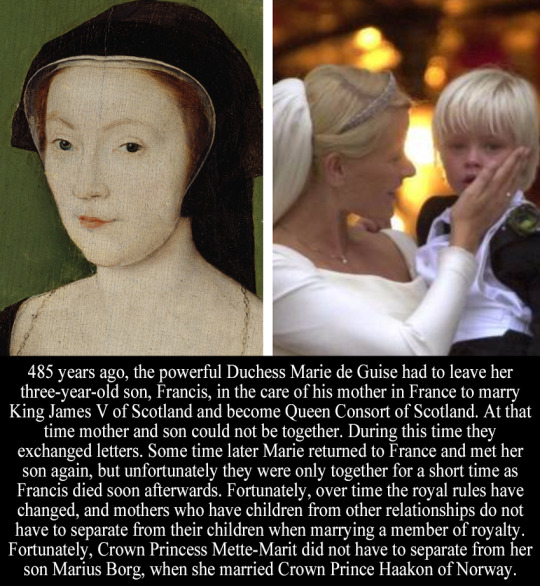
“485 years ago, the powerful Duchess Marie de Guise had to leave her three-year-old son, Francis, in the care of his mother in France to marry King James V of Scotland and become Queen Consort of Scotland. At that time mother and son could not be together. During this time they exchanged letters. Some time later Marie returned to France and met her son again, but unfortunately they were only together for a short time as Francis died soon afterwards. Fortunately, over time the royal rules have changed, and mothers who have children from other relationships do not have to separate from their children when marrying a member of royalty. Fortunately, Princess Mette-Marit did not have to separate from her son Marius Borg, when she married Prince Haakon of Norway.” - Text & Image Submitted by cenacevedo15
35 notes
·
View notes
Text
In 1563, following the assassination of her first husband, the Duke of Guise, Anne [d’Este] participated in a remarkable piece of political pageantry whose effectiveness as drama and a discourse of power depended on its female articulation. With her mother-in-law, Antoinette de Bourbon, she led a procession outside the church at Meulen, where the king was at vespers, to petition Charles IX for redress and vengeance for the murder. According to Pimodan’s description, the two duchesses, ‘vetues de grandes robes à queues trainantes s’avançaient, soutenues par des femmes de service voilées de noir et remplissant l’air de leurs gémissements’. Powerful Guise relations, cardinals and dependents took part in the demonstration but it was led by the two women, the bereaved mother and wife, flanked by their grandchildren and children and accompanied by the sounds of lamenting women. Falling on their knees, the two duchesses presented a petition and asked if the role of a monarch was not to protect ‘veuves et pupilles oultraigez’.
The demonstration used a visible and verbal language of dependence and loss, drawing on the domain and imagery of female grief, and was placed in the shadow of a Roman Catholic Church many of whose core images, such as the pietà and the mourning Marys, celebrate and memorialize the holy and righteous grief of women. In the specular economy of an aristocratic culture, the details of clothing, such as the ‘grandes robes’, presumably court dress, and the extravagantly trailing trains, juxtaposed against the gestural language of submission, present a complex emblem, in which status and humility, grief and pride, were held in balance. The message the duchesses articulated was, moreover, directed to the very core of the regal power system of privilege and obligation. They reminded the king of his duties in a form (the rhetorical question) and description (‘veuves et pupilles’) which again hold in powerful apposition assertion and dependence. Angry male Guise relatives alone would, perhaps, have been too directly threatening; Guise women alone could, perhaps, have been ignored. The combination, however, of a female drama of grief and dependence backed up, literally, by the presence of militant and powerful male magnates, gives tactful expression to a threat of armed vengeance and endowed naked power with an acceptable female face. The duchesses were not standing in for men, nor were they shielding men; they were an integral part of a complex message in which the discourse of femininity was poised beside a discourse of power. The very inequalities of gender, in fact, enabled these women to become effective instruments in the apparatus of state and family politics.
JESSICA MUNNS and PENNY RICHARDS, ‘Exploiting and Destabilizing Gender Roles: Anne d’Este’
#‘draw upon the cultural register of female grief to speak freely and ardently even to a monarch’#txt.#historicwomendaily#history.#16.#blunt not the heart.#unsex me here.#no idea what oultraigez means btw but we move
12 notes
·
View notes
Text






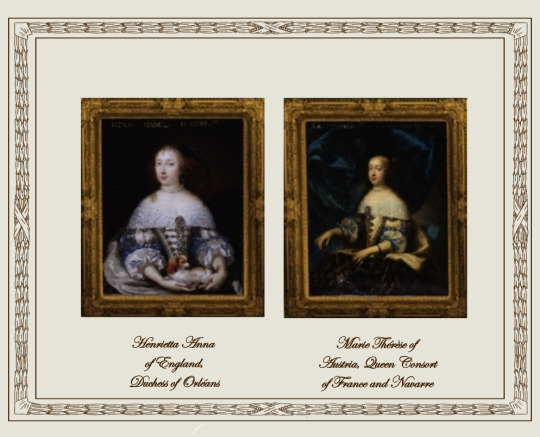
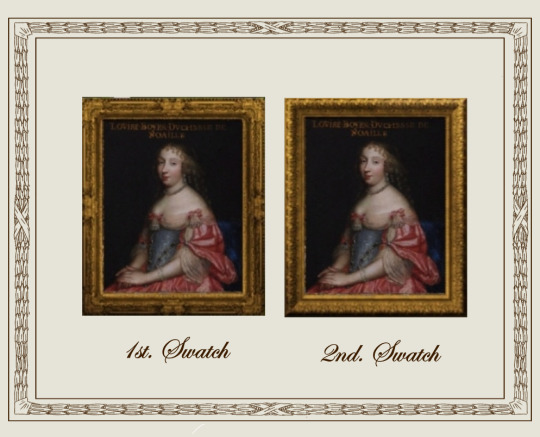
Louis XIV's Gallery of Beauties
A retexture by La Comtesse Zouboff — Original Mesh by @thejim07
This set of 20 portraits was comissioned by the king himself in the 1650s to Charles and Henri Beaubrun (except for a portrait of Henrietta Anna of England, Comissioned to Nicolas Mignard) The portraits comprises the queen, royal princesses and ladies of the court. They hanged at the king's appartments at Versailles. In the 1670s the paintings were progressively relegated to the king's minor residences, but in 1837, Louis-Philippe, King of the French turned Versailles into a museum and rejoined the paintings, in the Louis XIV Rooms, where they remain.
The set includes 20 portraits, with the original frame swatches, fully recolorable. The portraits are of:
Anne Genèvieve de Bourbon, Duchess d'Estouteville and Longueville
Françoise-Athénaïs de Rochechouart (later, Marquise de Montespan)
Anna Martonozzi, Princess of Conti
Anne Louise Boyer, Duchess of Noailles
Anne Marie Gonzaga, Countess Palatine
Anne de Rohan-Chabot, Princess de Soubise
Catherine Henriette d'Harcourt, Duchess d'Arpajon
Catherine de Neuville, Countess d'Armagnac
Charlotte Catherine de Gramont, Proncess of Monaco
Charlotte Isabelle Angélique de Montmorency-Bouteville, Duchess of Mecklenburg-Schwerin
Elizabeth of Orléans, Duchess of Guise and Joÿeuse
Françoise Madeleine d'Orléans (née de Valois) Duchess of Savoy
Françoise Mignot, Mareschalle of l'Hospital
Françoise de Neufville, Duchess of Chaulnes
Gabrielle-Louise de Saint-Simon, Duchess of Brissac
Henrietta Anna of England, Duchess of Orléans
Madeleine-Charlotte d'Albert-d'Ailly, Duchess of Foix
Marguerite Louise d'Orléans, Grand Duchess of Tuscany
Marguerite-Louise-Suzanne de Béthune-Sully, Countess of Gyche
Marie Thérèse of Austria, Queen Consort of France and Navarre
Found under Decor > Paintings for 940 §
Retextured from the "portrait of Anne Marie Louise d'Orléans", found here
Table, torcheres and floor by @thejim07
Rest of the decor by @joojconverts

Drive
(Sims3pack | package)
(Useful tags)
@joojconverts @ts3history @ts3historicalccfinds @deniisu-sims @katsujiiccfinds
-------------------------------------------------------
#the sims 3#ts3#sims 3 cc#portrait#s3cc#sims 3#sims 3 download#sims 3 cc finds#palace of versailles#sims 3 decor#wall decor
41 notes
·
View notes
Text




On November 22nd 1515 Mary of Guise, was born.
Mary was the eldest daughter of Claude of Lorraine, Duke of Guise, and quite the matrimonial catch. A tall and lithesome woman, she was also intelligent and brave, and proved her worth many times over as both a duchess and the Queen of Scots.
By her first marriage, to Louis d’Orléans, 2e duc de Longueville, on Aug. 4, 1534, she had one son, François, duc de Longueville. Widowed in 1537, she married King James V of Scotland in 1538, frustrating the hopes of England’s King Henry VIII for her hand. But James died on Dec. 14, 1542, a few days after the birth of their daughter, Mary Stuart.
In April 1554, James, 2nd earl of Arran, resigned, and Mary of Lorraine replaced him as regent for her 12-year-old daughter. At first she reconciled the religious factions under her rule, arranging, with Protestant support, her daughter’s marriage in 1558 to the Dauphin (later King Francis II) of France.
Apparently, however, pressure from France caused her to abandon her policy of religious toleration and to attempt the suppression of Protestantism in Scotland. By initiating legal proceedings against a number of reformist preachers in 1559, she sparked an uprising at Perth. The Protestant lords then drove Mary from Edinburgh and on Oct. 21, 1559, proclaimed that she was deposed. With French assistance she recaptured Edinburgh, but an English army helped the Protestants by besieging Leith in April 1560.
The ailing regent took refuge in Edinburgh Castle and on her deathbed urged the nobles of both parties to dismiss the armies of France and England and pledge to support her daughter. Her wishes were fulfilled soon after her death, but ultimately Mary Stuart proved unable to rule Scotland.
Along with the pics of Marie, the other photos are of memorials plaques to her at Edinburgh Castle and South Leith Parish Church.
9 notes
·
View notes
Text

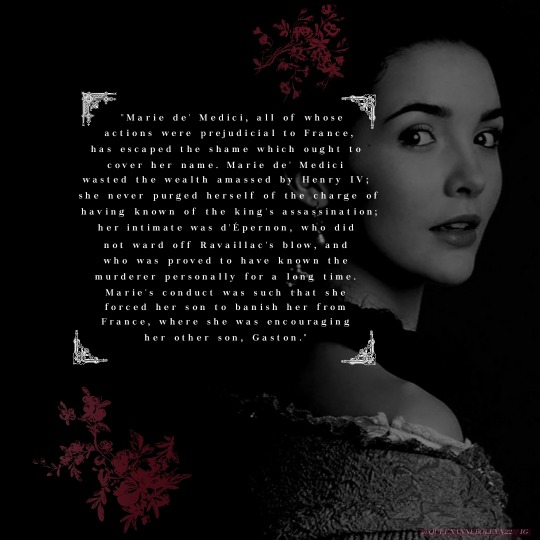
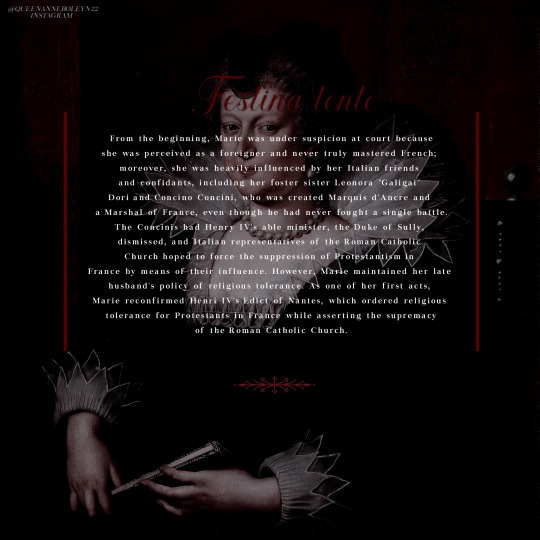
"The additional ingredient to this scenario was that the Guise possessed certain notable features that most other grandee families did not, their princely and trans- regional status. Their rank permitted access to the monarch that was unparalleled in most other court families, as ladies-in-waiting and holders of the highest court offices, but also merely as princely companions. They had strong links of blood and affinity with foreign powers, primarily in Italy, but also in Spain and the Empire.Guise women shared both these princely and trans- regional qualities with their male counterparts, and they came to the fore in a female- run court such as those of Marie de Medici and Anne of Austria. During periods of female rule normal lines of power and patronage thatradiate from a king to his most prominent male courtiers shift to a pattern of female alliances, as is seen notably in the reign of Elizabeth I of England. But these periods of female rule had their differences in seventeenth-century France. Katherine Crawford puts forward in her work on regencies that Marie de Medici overstepped her bounds as a female regent by presenting herself publicly as sharing royal authority with her son the King, whereas Anne of Austria always ensured that the public face of Bourbon authority was her son’s, never her own. By focusing on one of these matriarchs, the Dowager Duchess of Guise, Henriette-Catherine de Joyeuse, and her relationship with her son, Henri II, Duke of Guise, we can shed light on their conflicting interests between the dynastic and the personal, and in particular, in his personal ‘rêve italien’ versus the reputation of the family as a whole, in France and abroad, amongst the wider European society of princes."
Source: "Mother Knows Best: The Dowager Duchess of Guise, a Son’s Ambitions, and the Regencies of Marie de Medici and Anne of Austria" by Jonathan Spangler
#perioddramaedit#history#edit#history edit#marie de medici#marie de medicis#17th century#french history#women in history#women of history#anne of austria#historical#historical figures#queen#historical women#1600s#Bourbon#medici#historyedit#histoire#Graphic#history's women#baroque#marie of medici
71 notes
·
View notes
Text
One thing people don't realize about the Guise family is that they were constantly in over their head, starting as early as the 1540s. They may have been assholes and downright murderers in the name of the Catholic church, but the basis of their family fortune came from a sum of royal favors Francis bestowed upon Claude, the first Duke, because he was a cadet with little prospects over the Lorraine inheritance and he had a number of children to care for.
This did not magically transform into something sustainable that could have them maintain their wealthy and extravagant lifestyle, let alone support three to four generations of a dozen children each (also why i believe so many of their girls ended up taking the veil). It's no mystery why Antoinette became involved in the management of the estates and the domestic affairs of the family. Yes it was part of her 'job' as a Duchess but she had a knack for finances that Claude didn't have. Had she not, I don't think there would have been a second generation after them.
What I'm getting at is yes, they may have been greedy and objectively a bunch of questionable human beings ranging from not so great to downright despicable, but by the mid-16th century a large (or at least important) part of their income came directly from their proximity to the royal family and their ability to be favored by the crown one way or another. Religious fanatism or political narcisism were not the reasons they waged fifty years' worth of war and ravaged the Kingdom of France in the name of the Crown and the Catholic Church, it was their safest bet to ensure they'd keep the Crown and the Catholic Church indebted to them, and that the money would keep coming in, because they had virtually no other option but to keep doing that.
In an extract of their correspondence, Antoinette once wrote to her grandson that by funding another military campaign in the name of the Crown, they had already exceeded three times what they could afford, and his response to her was 'don't worry, granny, they'll retribute us', which the Crown stopped doing at some point in the 1570s, and that's the moment the Guises truly became a threat to Henri III and the royal family and legit blew a fuse.
That is the kind of multi-layered depiction I want to see of the Wars of Religions, the same period that saw Anne de Pisseleu, former all-mighty mistress of a King of France, openly switch sides and cozy up with the Protestant Leaders to ensure monetary gratification and personal protection, and Diane de Poitiers do the same with the Catholic Leaders.
I think it's one of the things we don't talk about nearly enough. Just because a conflict is based on an identity crisis involving one or multiple faiths, doesn't mean the motivations are pure and selfless, and this is why in the grand scheme of things, it never seems to make sense. Because it doesn't.
#history#don't mind me i'm having Thoughts#17th century#people tend to think that the guise family topped everything with mary stuart and her mother's weddings#but these two things are only a part of their family story and symptom of their family policies
33 notes
·
View notes
Photo








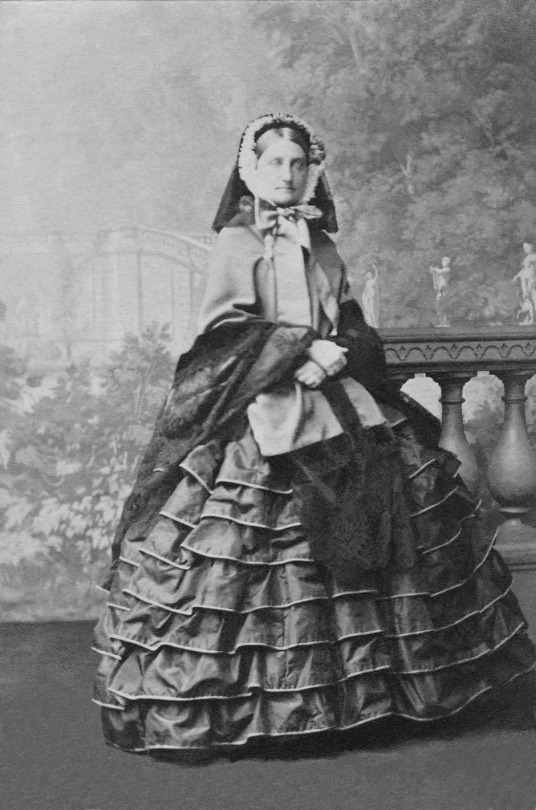

Marie Caroline Auguste de Bourbon-Siciles, duchesse d'Aumale —
Top row left: 1842 Marie Caroline Auguste de Bourbon-Siciles, later Duchesse d'Aumale by Josef Kreihuber (Musée Condé - Chantilly, Oise, Hauts-de-France, France) photo - Adrien Didierjean. From Reunion des musées nationaux; enlarged by half 810X985 @154 140kj.
Top row right: 1842 Princess Maria Carolina of Bourbon-Two Sicilies at the Age of 20 by Franz Schrotzberg (Musée Condé - Chantilly, Oise, Hauts-de-France, France). From pinterest.com/bjornolofkihlbe/art-austrian-artists/franz-schrotzberg/ 980X1069 @72 144kj.
Second row left: 1845 Maria Carolina of Bourbon-Siciles by François Meuret (Musée Condé - Chantilly, Oise, Hauts-de-France, France). From Wikimedia; doubled size 806X994 @96 139kj.
Second row right: 1846 Marie-Caroline-Auguste de Bourbon-Siciles, princesse de Salerne Duchesse d'Aumale by Meuret (Musée Condé - Chantilly, Oise, Hauts-de-France, France). I got this before I recorded sources; posted to another site in April 2010.
Single images from top to bottom -
Maria Carolina, Duchess of Aumale, née Princess of Bourbon-Two Sicilies, with her eldest son, Louis, Prince of Condé by ? (location ?). From tumblr.com/blog/view/bespridannitsa 855X1200 @72 515kj.
1851 Marie Caroline Auguste de Bourbon-Siciles by Victor Mottez (Musée Condé - Chantilly, Oise, Hauts-de-France, France). From Google search 615X1191 @72 171kj.
ca. 1854-1855 Miniature of the duchesse with the prince de Condé and with the duc de Guise on her lap, by Sir William Ross (location ?) From godsandfoolishgrandeur.blogspot.com/ 750X980 @300 1.4Mp.
1865 Duchesse d'Aumale by Adolphe Beau (Musée Condé - Chantilly, Oise, Hauts-de-France, France). I did not record sources when I found this; posted to another site in April 2010.
1865 Marie Caroline, duchesse d'Aumale by Mayer Brothers. From eBay. pots and flaws were removed from all parts of the image. A small part of the ground she stands on was teased out from the spots and extended all around the hem of her skirt 940X1421 @1 510kj.
1866 Marie Caroline Auguste de Bourbon-Siciles by Charles Jalabert (Musée Condé - Chantilly, Oise, Hauts-de-France, France). From Wikimedia; removed more conspicuous spots & flaws with Photoshop & cropped right margin 1498X2359 @762 1.4Mj.
#Romantic era fashion#early Victorian fashion#1840s fashion#Marie Caroline Auguste de Bourbon-Siciles#duchesse d'Aumale#1842 fashion#Josef Kreihuber#straight hair#chignon#bertha#bow#quarter-length close sleeves#puffed cuffs#V waistline#full skirt#Franz Schrotzberg#hair flowers#modesty piece#scoop neckline#off shoulder neckline#pleated bertha#V neckline#floral bodice ornament#ruching#wrap#sheer wrap#1845 fashion#François Meuret#side braid coiffure#sheer cuffs
20 notes
·
View notes
Text
La petite brève du soir...
Manuléon Il, Notre Prepubere Tyranneau, s'adressa à ses vils sujets pour leur rappeler dans une morne allocution qu'ils avaient fort mal choisi les impétrants au Tournoi de la Chambre Basse. L'ingratitude était chose fort laide. Ils le privaient de pouvoir s'amuser à sa guise comme il l'avait si bellement fait lors de son premier règne. La mort dans l'âme, il annonça qu'il lui fallait renoncer à former un gouvernement d'union nechionnale, ce qui contraria fort ce brave Cadet Ruissellus. Sa Grandeur Dépitée en appela aux "Zopozissions" - il fallait entendre par là les Raipoublicains et les Haineux - afin qu'on lui fît allégeance sans trop tarder. Le nouveau nom de la Faction Impériale prenait ainsi tout son sens : la Rhainaisance. A la suite de quoi, Notre Morgueux Foutriquet asséna qu'il s'en allait prendre les eaux du côté de Baden-Baden, dans le royaume de la Germanie.
La petite duchesse de la Gerbée connut enfin son heure de gloire. En l'absence du duc de Gazetamère qui pansait ses cabossures et son orgueil fort mal en point, elle fut choisie par ses pairs les Dévôts et les Dévôtes pour être leur Présidente de troupe à la Chambre Basse. C'était là la consécration de moult années de lèchecuterie effrénée et de bêtise satisfaite. Cette courtisane les avait tous servis, elle avait rampé fort consciencieusement dans tous les antichambres des grands barons de la Dextre. Nul doute qu'elle exercerait sa nouvelle charge avec le zèle fort bêlant qui la caractérisait. Les duchesses de Sitarte et de la Courge feraient bientôt figure de grandes philosophes face à cette infatigable courtisane.
Ainsi en allait-il au Royaume du Grand-Cul-par-dessus-Tête au quatrième jour après la Grande Décrépitude.
Texte Julie d'Aiglemont
Illustration géniale de Bridget Jaune

9 notes
·
View notes
Text
History ask! Answering 13 and 23 from @histoireettralala
13: a random historical trivia!
Sooo before King (then Prince) Albert married Elisabeth (*not me), he was courting Isabelle d’Orléans (later Duchesse de Guise). His uncle, (the infamous) Léopold II terminated the courtship out of the grounds of possible backlash from the French republican government.
23: What’s your favourite historical song or song containing historical references?
Yeah I don’t think you need to guess because of you all have been watching me being in a lavender haze for completely smitten by a certain Belgian dude—it’s “Race to the Sea” by Sabaton.
FOR KING AND FOR COUNTRY WE ARE FLOODING THE RIVER
OUR STAND AT YSER WILL BE THE END OF THE RACE TO THE SEA
THE LAST PIECE OF BELGIUM’S FREE WE’RE KEEPING THE SILVER
A COG IN THE WAR MACHINE OCTOBER OF 1914

This aside, “Father” and “Fields of Verdun” are close running seconds.
Honourable mention goes to “Carolus Rex”, “Winged Hussars” and “Christmas Truce” (but maaaaan this band gives the best stimming experience for my autistic ass besides all the history lessons 🥺🥺🥺)
If it’s not an explicitly historical song then I would say “The Great War” by Taylor Swift for the poppy reference and a possible imagery of being a lover to a WWI soldier reminiscing about her experiences during the war (stream Midnights pls)
#it is either Taylor Swift or Sabaton for my music tastes#there is not between#accept it#history ask#I’ve been awake since 5am this morning just for the sake of midnights hhhhhh#albert i#king albert i of belgium#Belgian babe(y)
5 notes
·
View notes
Photo
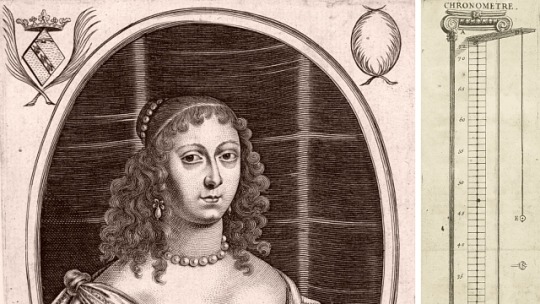
16 juillet 1702 : mort d'Étienne Loulié, musicien, pédagogue et théoricien de la musique ➽ https://bit.ly/2Xb2nXn Exerçant à Paris la profession de maître de musique et attaché au service de la duchesse de Guise, Étienne Loulié, admirateur de Lully, consacre une partie de son existence à la mise au point d'une nouvelle technique pédagogique et vante en 1696 les mérites d'un « chronomètre » de son invention, ancêtre du métronome
#CeJourLà#16Juillet#Loulié#musique#musicien#théoricien#pédagogue#théorie#pédagogie#chronomètre#sonomètre#métronome#biographie#histoire#france#history#passé#past#français#french#news#événement#newsfromthepast
2 notes
·
View notes
Text
[RECAP] Obsidian Crown: Chapter One
This time, our story begins in the sweltering heat of the Obsidian Empire, in a restless city on the precipice of change, and in the palace of Duke Manuelo de Terceira, where one woman has begun to dream…
The session opens on Amárita (PC, she/her), a young oracle who has recently been plagued with prophetic dreams foretelling war. This dream however, is different; even as she sees the same bloody battlefield she’s dreamed hundreds of times before, this time Amárita is approached by what she can only assume is an angel, who’s taken the guise of Amárita herself. The angel tells her, without speaking aloud, “And this too, will come to pass.” And then Amárita wakes up in her room in the Terceira palace, alone, shivering and covered in sweat. An angel has spoken to her, and promised that war will come. This does Not Bode Well.
Meanwhile, the rest of our party is introduced as everyone heads to breakfast:
Fiore de Valeri (PC, they/them) is the child of Duke Calandros Valeri, who’s been sent to Forlante to hangout and make nice with House Terceira.
Argyle (PC, he/him) is a guard in the service of House Terceira. It also seems that he’s closer to the noble family than is immediately obvious, as he’s received an invitation to join the duke and his court for their breakfast gathering.
Diamantina “Dia” Rentagno (PC, she/her) is an assistant to the duke’s court painter, Alexandre.
Victoria Escarrà Cervantes (PC, she/her) is Sancha Maria’s fencing instructor.
Sofonías Absolon de Reyzende (PC, he/him) is the duke’s cousin and the chancellor of Forlante, in charge of overseeing many of the administrative duties of running the duchy.
The party all comes together at the duke’s breakfast gathering, where conversation continues, and the duke wishes his court a farewell. We’re also introduced to a few of House Terceira’s courtiers and resident NPCs:
Alexandre (NPC, he/him) - the incredibly talented court painter, with a rather unfortunate personality.
Henric Varnhame (NPC, they/he) - an Arysian historian and philosopher, taken in by Duke Manuelo after they had to flee to Terazin.
After breakfast, the household prepares to see Duke Manuelo and his entourage off to the docks, where they’re departing. Argylle asks Duke Manuelo why he was invited to breakfast with the rest of the family/household, and Duke Manuelo explains that he wants Argylle to feel like a member of the family. It seems that Argylle is the illegitimate son of the Duke’s younger brother, Vicente, who died nearly two decades ago.
As the Terceira household waves Duke Manuelo and his entourage goodbye at the docks (including Camelo and Sofonías), the new regent, Sancha Maria de Terceira, is approached by Cosima de Mendoza (NPC, she/her): an extremely wealthy commoner who owns the largest bank in the world, but whose family has historically not been on great terms with House Terceira due to being exiled by the former Duchess, Sabina de Terceira (Manuelo’s mom). Cosima merely wishes Sancha Maria good luck in ruling the duchy in her father’s absence, though the shawl she’s wearing is a carefully embroidered depiction of the assassination of a Terceira ancestor, the conspiracy which would spark the revolt that established the Forlante Republic, which House Mendoza was instrumental in creating (and the reason for their exile).
Cosima turns to leave, but asks to speak with Fiore, as their two families know each other. Fiore politely declines, and the party can only watch as Cosima departs. There is a bad feeling in the air, a sense of foreboding for the future, but there’s nothing left to do but watch as the sails unfurl on Duke Manuelo’s ship and it heads out of the harbor…
0 notes